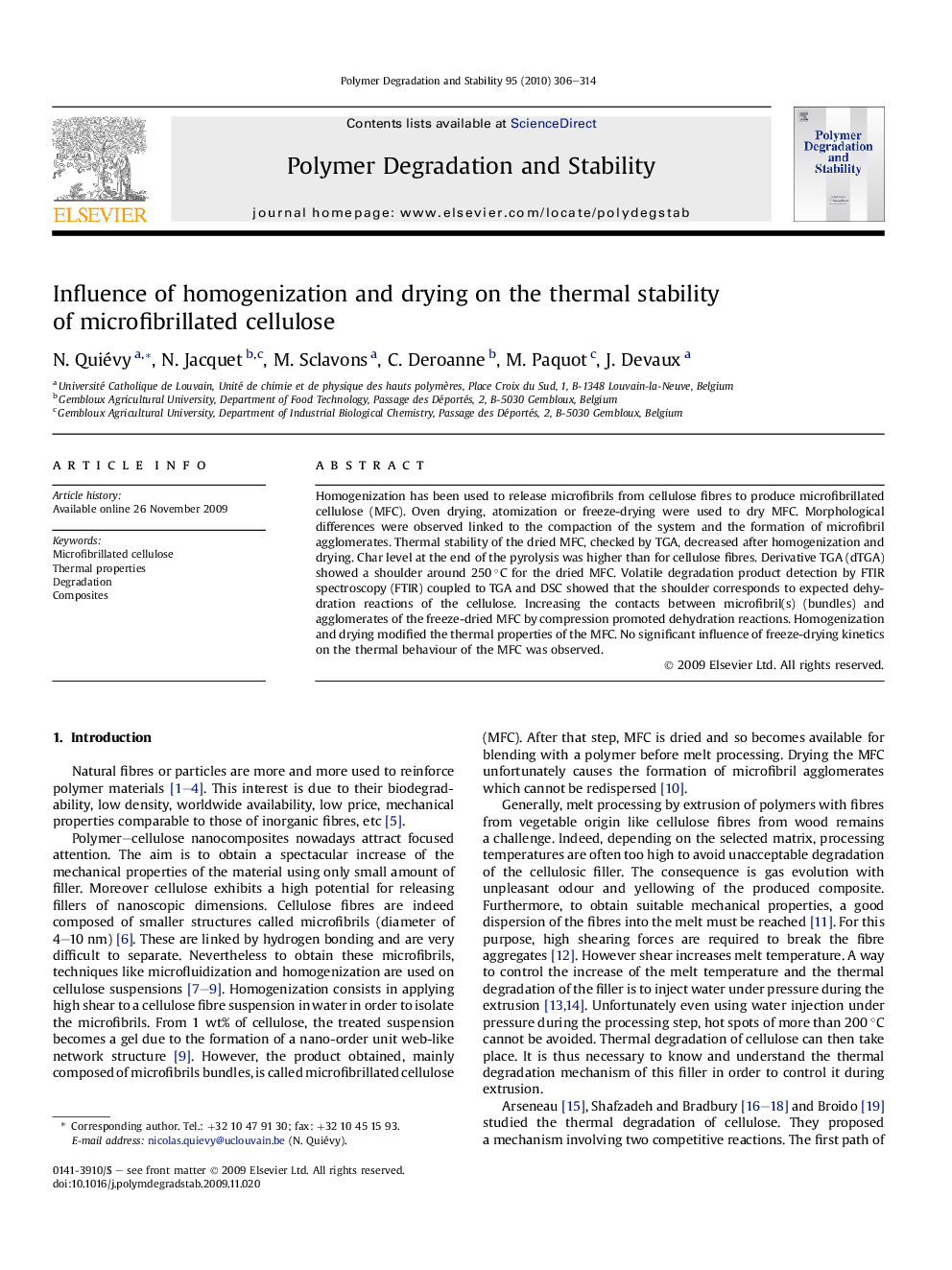| Article ID | Journal | Published Year | Pages | File Type |
|---|---|---|---|---|
| 5202836 | Polymer Degradation and Stability | 2010 | 9 Pages |
Abstract
Homogenization has been used to release microfibrils from cellulose fibres to produce microfibrillated cellulose (MFC). Oven drying, atomization or freeze-drying were used to dry MFC. Morphological differences were observed linked to the compaction of the system and the formation of microfibril agglomerates. Thermal stability of the dried MFC, checked by TGA, decreased after homogenization and drying. Char level at the end of the pyrolysis was higher than for cellulose fibres. Derivative TGA (dTGA) showed a shoulder around 250 °C for the dried MFC. Volatile degradation product detection by FTIR spectroscopy (FTIR) coupled to TGA and DSC showed that the shoulder corresponds to expected dehydration reactions of the cellulose. Increasing the contacts between microfibril(s) (bundles) and agglomerates of the freeze-dried MFC by compression promoted dehydration reactions. Homogenization and drying modified the thermal properties of the MFC. No significant influence of freeze-drying kinetics on the thermal behaviour of the MFC was observed.
Related Topics
Physical Sciences and Engineering
Chemistry
Organic Chemistry
Authors
N. Quiévy, N. Jacquet, M. Sclavons, C. Deroanne, M. Paquot, J. Devaux,
